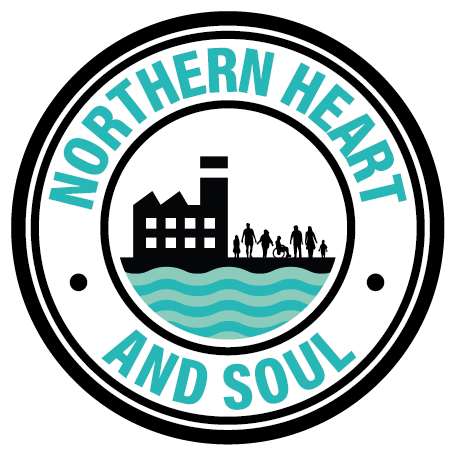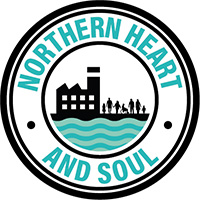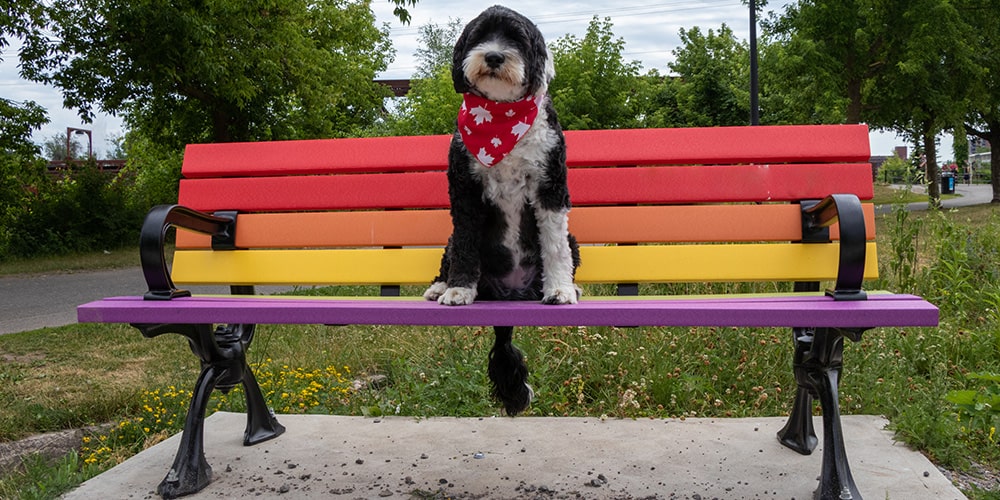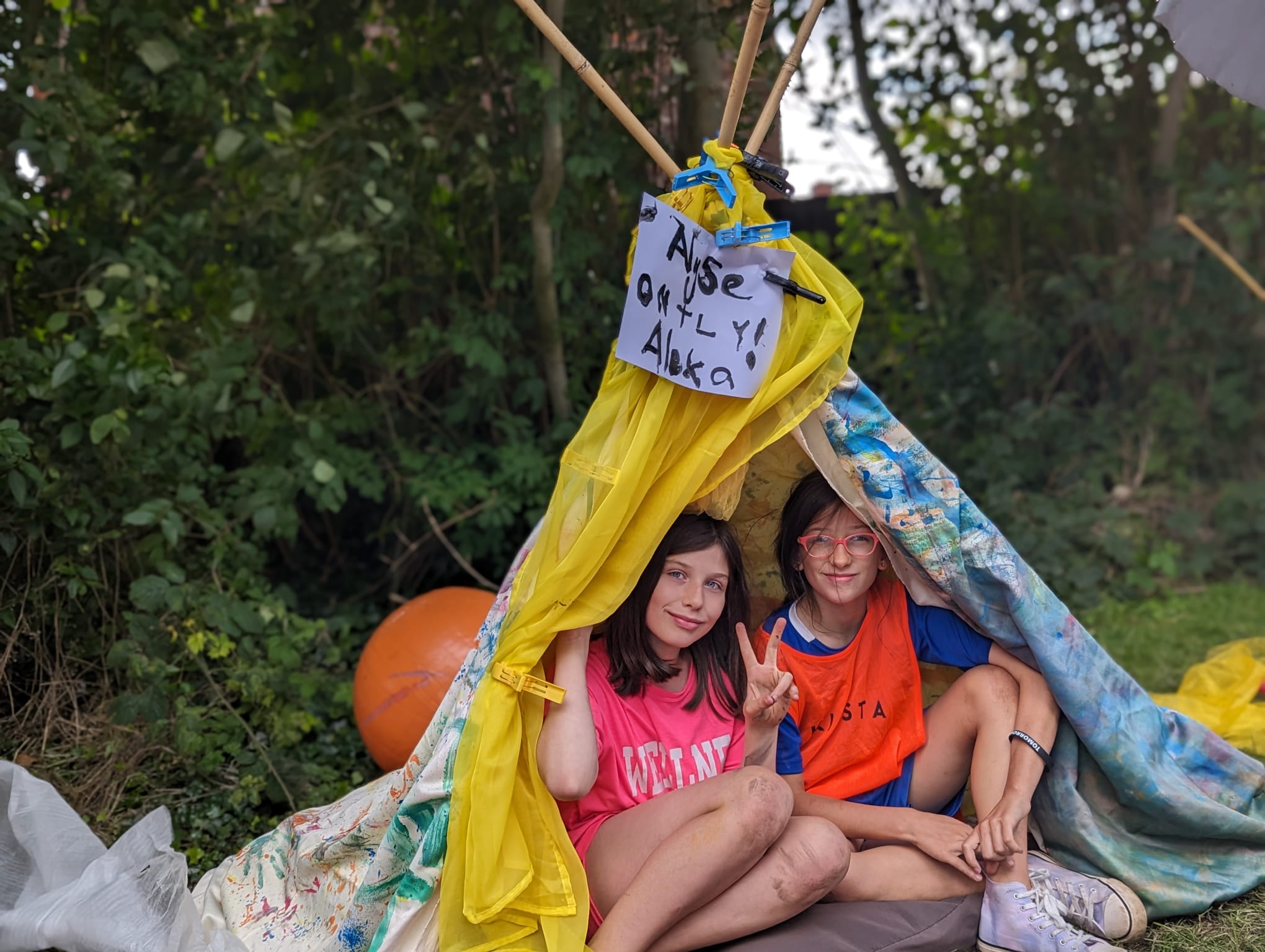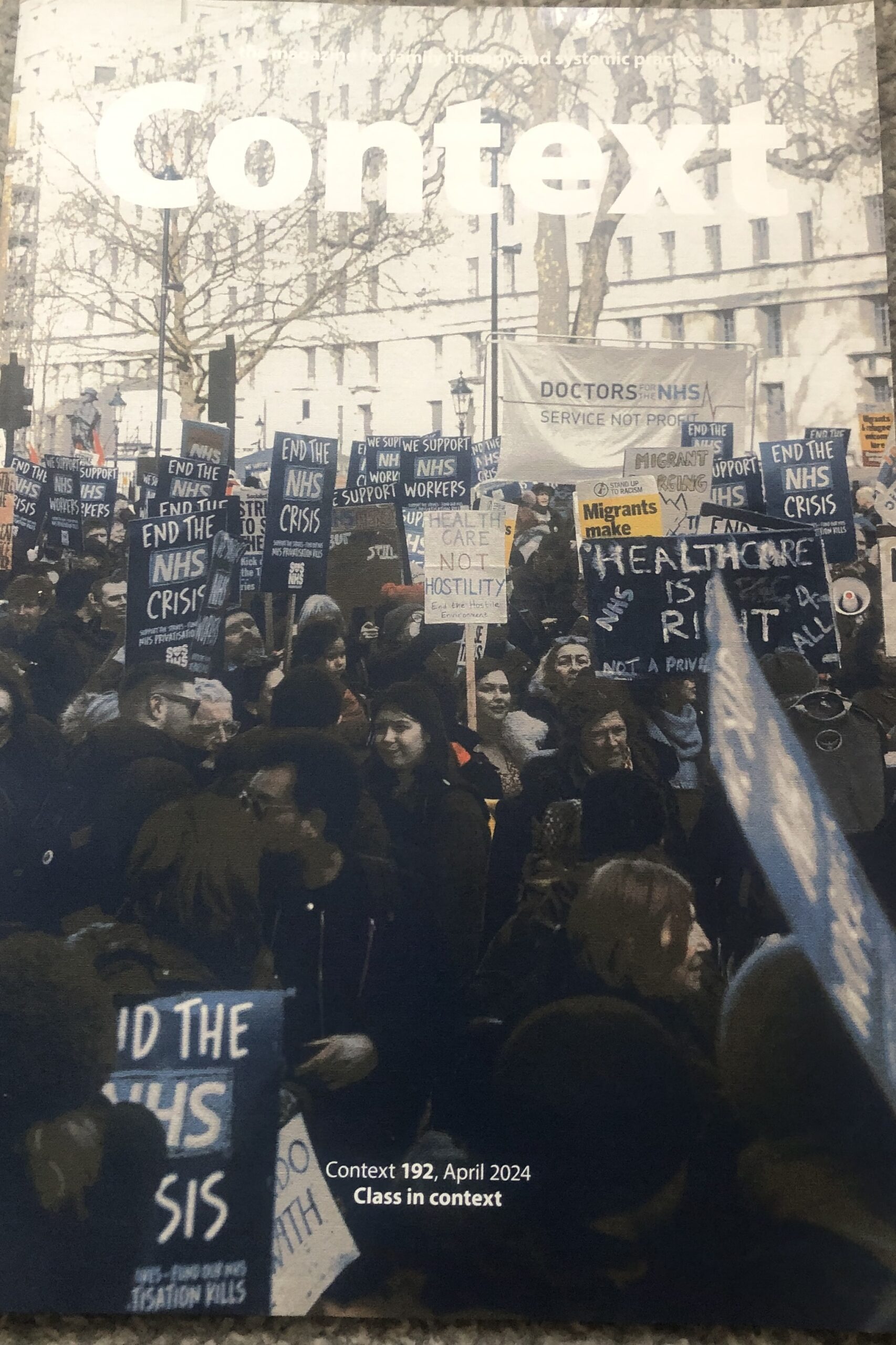
Healing- A Function of Community?
It was probably 18 months ago when Danny McGowan approached me to contribute an article to ‘Class in Context’. Healing – A Function of a Connected Community was produced in April 2024 in the 192nd edition of Context, the magazine for family therapy and systemic practice in the UK. This issue is specifically focussed on class and I am honoured to have contributed.
Here is the article – Healing – A Function of a Connected Community reproduced in full.
The questions I’m offering to keep you company as you read this article are:
• How might well-intended support services displace the function of natural communities?
• In other words, how do we contribute to the problems we complain about?
For context, I had the privilege of working with the two guest editors, Danny and Abbie in another one of those attempts to transform children and family services. This one took place in Wigan between 2011 and 2016. It carried on after 2016 in a very much watered-down form, but by that time I’d left feeling very watered down myself.
I will share a selection of reflections and insights from that time. Since then, I’ve walked deeper into community life – commoning in my own backyard with friends and neighbours. That’s the work I intend to foreground, as too often it remains in the background overshadowed by its middle-class cousin, public-service reform.
To frame the piece and settle in I’ll start with a famous quote taken from a person in Rwanda whilst in conversation with Andrew Solomon.
“They came and their practice did not involve being outside in the sun where you begin to feel better. There was no music or drumming to get your blood flowing again. There was no sense that everyone had taken the day off so that the entire community could come together to try and lift you up and bring you back to joy. There was no acknowledgement of the depression as something invasive and external that could be cast out again. Instead, they would take people one at a time into these dingy little rooms and have them sit around for an hour or so and talk about bad things that had happened to them. We had to ask them to leave” (Solomon, 2008).
And now to a scene involving women who live in a neighbourhood in Wigan. One of the neighbourhoods that has lots of labels that have often been internalised by the people living there.
Linda, Sue and Freda sit in a community centre in Merseyside. They’ve arranged a visit as they want to host an afternoon tea in their Wigan community and they’ve heard this one is really successful. The Merseyside event happens monthly and it’s always a sell-out. Everyone’s having a dance, there’s a table of folk from the older people’s home across the road, some being pushed around in wheelchairs on the dance floor. There’s a game of bingo, a raffle, an ‘act’ and afternoon tea. Some tables have brought a bottle, celebrating special birthdays. You get a sense that they’ll all go home feeling like they’ve had a Saturday night out and danced their cares away. For Linda, Sue and Freda the idea to do something like this grew out of one of the open social spaces in the community. They want to do more for the ‘oldies’ and those struggling to leave their four walls for many different reasons. “Give them a laugh”, says Linda. “We all like a laugh”. Freda says she loves being in the company of oldies. “They are so wise and have so many stories to share.” Contributing to community in this way also seems to make their own troubles feel lighter; easier to carry. And the women have a bag full each.
At the community centre is Jaz, a community connector, who has a natural ability to develop rapport and create the conditions in which people naturally share, or unfold life’s difficulties, whether that be current traumas or the ghosts lurking in the nursery. You can find him calling bingo in the hall one day, with prizes of washing powder and toilet roll. In reality, he’s convening space and creating the conditions for intergenerational peer support. No one can tell Eve to “keep your legs shut and have more respect for yourself”, than 83-year-old Ethel. No one else would get away with it. The next day Jaz might be sat in a room with a community member or a couple of community members, being alongside people as they seek to make sense of their lives, the cards they’ve been dealt and the stories they’ve internalised.
Linda’s eyes light up as she listens to the way in which Jaz works. “We should have this round our way.” What she means is: This is the type of therapy I could engage with. It understands me. It understands class.
Yet, much of the resource that manages to trickle its way down into communities tends to be spent on upskilling the helping or fixing professionals, or, building the capacity of local people to organise and function like the middle classes. “You can manage this building that we can longer afford once we’ve empowered you and shown you how to do it properly.” We rarely believe that an oppressed community might be able to find its own path if we took the time to get alongside and discover and reveal what’s already there, connect it, allow relationships to grow and deepen, and, when the soil is richer and the roots deeper, enable mobilisation through resourcing and professional support that is on tap rather than on top. Instead, investment in public service reform, maintaining the status quo and the master servant paradigm seems to be the preferred route to liberation.
Back in 2010, Wigan Council leaders chose to invest much of their Community Budgets monies on the public service reform work I was involved in with Danny, Abbie and others. The Council invested in an idea that had been hatched and tried in London aimed at bringing services together in place and creating teams around families that would in turn save the public purse money. There were a few doing the rounds at the time, this one pre dated the Troubled Families Programme, and was called the LIFE Programme and designed by a company called Participle. It was a poisoned chalice really as it didn’t find its way into Wigan through the usual commissioning routes, so it experienced a level of resistance.
However, there were elements that families loved and found really useful. I’ll highlight three examples.
Families loved having a base- a house in which they could experience different ways of being together. A space that was kitted out like a home where decisions were made together about its use. A place where people felt comfortable, maybe even had some fun in, and, trust had grown before they were expected to unravel and lay out their trauma and parenting failures for all to see; and, those therapeutic conversations might take place sitting in the garden, over a fag and a brew. They were often impromptu and rarely fitted neatly into appointment calendars and diaries. Families started to invite in other families. They’d bring them to the door. “I think this might help …..” The domineering system cut this safe, open and healing space and it became home instead to the next big idea / pet project in innovation.
Secondly, families loved having a team of people who had lots of different professional skills not wrapped around them, but accessible to them. They also liked that the professionals used methodology and tools they understood. If a family member was working with a team member with a housing background, and had a worry or a question about health, then they could have a chat with the nurse, who they’d probably met over a brew during the invitation phase. There was something very power balancing that was noticeable about this.
“Everything you need is here, under one roof. This is how it should be,” said Nicky. There was more to it than that though, it wasn’t just about rearranging the professionals in a community space, like the way traditional multi-disciplinary teams are organised. Take the Youth Offending Team as an example. It was the way service was offered too and the way in which family members had greater control in determining the professional support they might need. The focus wasn’t on a professional assessment, that hopefully the family members might understand, but on a really accessible tool called the ‘talking triangles’, which put the family at the centre of the planning process. I had hoped this tool might become a much-used tool, but unfortunately it didn’t fit the monitoring systems and, I think the middle-class professionals thought the tool that worked for families was too simplistic. “How would I fit all my long words and professional analysis into that tiny box?”
The third element was the style in which team members worked alongside family members. There was an open invitation for starters, which meant what it said on the tin. As we grew, we learned the importance of contracting too. The open invitation was crucial for family members who were only too familiar with the boom and bust of service provision. “We are here for as long as there’s funding. Obviously, we want you to sack us off, but the door is always open and other families may welcome your experience”, was our mantra. You could see family members shoulders drop when you said this to them. Obviously, we had much more to do to earn trust, but this was certainly a much-loved feature. We had a systemic family therapist (i.e. Danny) who supervised the work of the team members and facilitated rich learning and training. The closer we brought the therapeutic relationship to the family, and invested in and supported the team members that were alongside, the more the domineering system kicked back. From thinking that we were discounting their professional training, to concerns about making them redundant.
So, what worked in working class communities often worked against the dreams and career hopes of the middle classes and consultants. In fact, if you take a good look at what you can read about the LIFE Programme as featured in Radical Help (Cottam 2019), you’ll be hard pressed to find any of these insights. Just polished ‘relational’ messages that consultants can sell and public service reformers can easily digest. More training for the helpers please!
That experience took me to commoning and thinking about creating natural ways that might just eclipse and be far more healing centred than current domineering systems. The more distance between myself and the well-oiled public service reform machine, no matter how radical, the more I’ve felt that the work I was involved in contributed to making the natural networks redundant in ways that are eloquently described in John Deere and the Bereavement Counsellor (McKnight, 1995)
We’ve also seen working class communities stripped of the social infrastructure, the necessary part of the local eco system that feeds mutual, peer and reciprocal networks.
As luck would have it we’ve been invited into the Greater Manchester System Changers network, funded by Lankelly Chase Foundation, and invested in to see if it’s possible to cultivate a connected, healthy and powerful community that keeps hold of its people and land. Exploring community alternatives to care, not in big society terms, i.e. ‘do it for nothing or as a condition of benefits’, but one that’s rooted in justice and redistributes wealth directly into the hands of local people. You can discover more about the journey and the influences behind the work on the Northern Heart and Soul website.
We’re interested in rekindling the function of community and we believe one of those functions is collective healing. We also believe and know, mainly from experience and partly from the very limited research available, that working class communities organise and heal in different ways to the middle classes. Talking therapies are based on dominant white, Western, middle-class values. Working class and natural communities often find healing through art, music, dance, movement, cooking, growing, laughter and being in community together.
So whilst it would be brilliant to have the parts of public service that are fit for reform, reformed, I’m much more in favour of tipping the balance of resource distribution towards natural communities and exploring how we shift money and resource, directly into people’s hands. More like Mauricio Lim Millers work we say. (Lim Miller, 2011)
So my friends, it’s back to the questions in hand.
How might well intended support services displace the function of natural communities?
Or in other words, how do we contribute to the problems we complain about?
References
Lim Miller, M. (2011) Family Independence Initiative. Available at: https://www.ashoka.org/ en-gb/fellow/mauricio-lim-miller [Accessed 30/05/2023].
McKnight, J.L (1995) The Careless Society: Community and its Counterfeits. New York: Basic Books.
Solomon, A. (2008) Notes on an Exorcism. Available at: https://themoth.org/stories/notes- on-an-exorcism [Accessed 30/05/2023].
